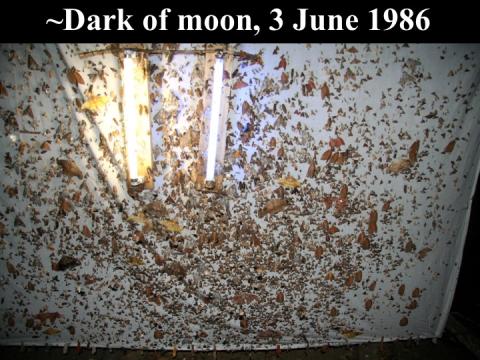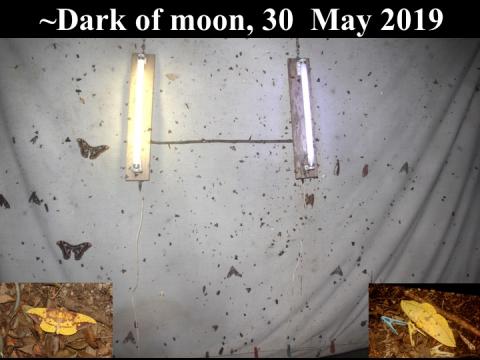
A wood thrush outfitted with its nanotag. Photo by Diego Rodríguez.
In the Autumn 2024 issue of Living Bird magazine, a publication of Cornell University’s Lab of Ornithology, two ornithologists who work in the Ecuadorian Amazon discuss their research showing that bird populations there are exhibiting even steeper losses than the declines reported for forest birds in North America. Populations of tropical forest birds in this remote Amazon site are down nearly 50% since 2001. “At least 90% of the species that we had enough data to look at are declining, and very few species have shown increases,” says Bette Loiselle, a professor in the Wildlife and Ecology Conservation department at the University of Florida. Some of the bird species hardest hit are insectivores. Similar bird declines are being reported in other protected forests of the tropics. This fact, the scientists note, is puzzling, since these areas are protected from deforestation and habitat loss. More and more, scientists are turning to declining numbers of insects as the main culprit. The article, “In the Tropics, A Troubling Echo of North America’s Bird Declines,” also highlights the work of Drs. Dan Janzen and Winnie Hallwachs in Área de Conservación Guanacaste and their 2020 study regarding their observations of dramatic declines in insect numbers inside ACG. Also noted were the shifting patterns of precipitation and temperature, as well as the cloud cover in the highest parts of the protected area. The reduction in cloud layer, they said, resulted in drying forest litter, reduced stream flow, and a change in the volume and makeup of the insect population. The article notes that while scientists have different ideas about the factors in Neotropical forest bird declines, one thing they do agree upon is the need for more data to better understand the root causes.
The GDFCF BioAve project is working on the data piece. Using bioacoustics, MOTUS stations, nanotagging, bird banding, and local telemetry, we are trying to understand how birds — particularly neotropical migrants — use ACG’s forests, from where they live, to how they move around, to what they eat. Our focal species, the Wood Thrush, is a forager of insects on the forest floor. So far, our research indicates a robust presence of these birds during their non-breeding season in ACG. We have placed bioacoustics units in 71 locations at 12 sites, with 66% of the sites detecting a Wood Thrush presence. At each station, vegetation measurements were taken to better understand the habitat needs of the species. Overall, 7,200 square meters of land was analyzed. We also ensured that recorders were deployed in the dry forest, cloud forest, and transition zones to both higher and lower elevations. By analyzing the data, Dr. Natalie Sánchez, the BioAve project director, has found that frequency of Wood Thrush occupancy is best explained by precipitation and the basal area of trees. This species, therefore, is most likely to inhabit areas with higher rainfall and older-growth forests. The research confirms the value of older-aged, and middle-age rainforests in recovery, to the habitat needs of Wood Thrush. Still, there is much left to learn, and we are increasingly involving the parataxonomists in this research. Natalie will be starting her 2024/2025 field research soon, with a focus on nanotagging migratory birds. We are grateful to the Conservation, Food & Health Foundation for funding this work, and our individual donors who support bird research in ACG.


These photos show the difference in insects at an insect trap, at the same time of year, between 1986 and 2019, in Área de Conservación Guanacaste. Photos by Daniel Janzen.